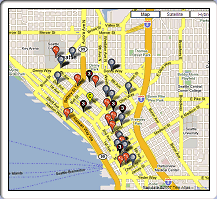Table Of Contents
Ethernet technology is ubiquitous. More than 85 percent of all installed network connections were Ethernet by the end of 1997 according to IDC. This represents over 118 million interconnected PCs, workstations and servers. The remaining network connections are a combination of Token Ring, Fiber Distributed Data Interface (FDDI), Asynchronous Transfer Mode (ATM) and other protocols. All popular operating systems and applications are Ethernet-compatible, as are upper-layer protocol stacks such as Transmission Control Protocol/Internet Protocol (TCP/IP), IPX, NetBEUI and DECnet.
1998 was a milestone year for Ethernet network equipment as the technology captured 86 percent of shipments. IDC projected Ethernet network interface card (NIC) shipments would exceed 48 million units, and Ethernet hub shipments would exceed 48 million ports. In contrast, ATM, FDDI/CDDI and Token Ring network interface card shipments combined were expected to reach just 5 million in 1998, 10 percent of the total. ATM, FDDI/CDDI and Token Ring hub ports were expected to be 4 million, 7 percent of the total. IDC projected that Ethernet dominance will continue beyond 1999. Several factors have contributed to making Ethernet the most popular network technology in use today.
Ethernet Network Reliability
Highly reliable networks are critical to the success of the enterprise, so ease of installation and support are primary considerations in the choice of network technology. Since the introduction in 1986 of star-wired 10BASE-T hubs, structured wiring systems have continued to evolve and hubs and switches have become increasingly reliable. Today, Ethernet networks are rapidly approaching the reliability level associated with their telephone ancestors, and are relatively simple to understand and administer.
Availability of Management and Troubleshooting Tools
Management tools for Ethernet, made possible by widespread adoption of management standards including Simple Network Management Protocol (SNMP) and its successors, allow an administrator to view the status of all desktops and network elements, including redundant elements, from a central station. Ethernet troubleshooting tools span a range of capabilities, from simple link indicator lights to sophisticated network analyzers. As a result of Ethernet’s popularity, large numbers of people have been trained on its installation, maintenance and troubleshooting.
Scalability
The Fast Ethernet standard, approved in 1995, established Ethernet as a scalable technology. Now, the development of Gigabit Ethernet, approved in 1998, extends the scalability of Ethernet even further. Now Ethernet scales from 10 to 100 to 1000 Mbps.
Low Cost
IDC’s analysis of Ethernet and Fast Ethernet indicates a rapid decrease in price per port for both technologies. There has been a rapid overall decrease in the per-port price for Fast Ethernet and Ethernet products, and for shared hub ports, the difference between their costs is narrowing. Over time, Gigabit Ethernet per port costs can be expected to experience similar price decreases.
Links of interest:
- Ethernet Whitepapers
- USA Business & Carrier Metro Ethernet
- Metro Wave Division Multiplexing, DWDM Services and DWDM/ROADM
- Business Phone Systems (external)
- International WAN & DIA Services
- Wholesale SIP Termination (carrier & enterprise)
If you found this page helpful, please support us by bookmarking us with one of the services below or by linking to this page.
- dominant network technology
- computer network technologies
- what is dominant network
- popularity of ethernet technology
- networking technologies of Ethernet
- network technologies used today
- most dominant network technology
- IDC gigabit ethernet evaluation
- ethernet popularity
- demand for server Network Adapters#
No related posts.










